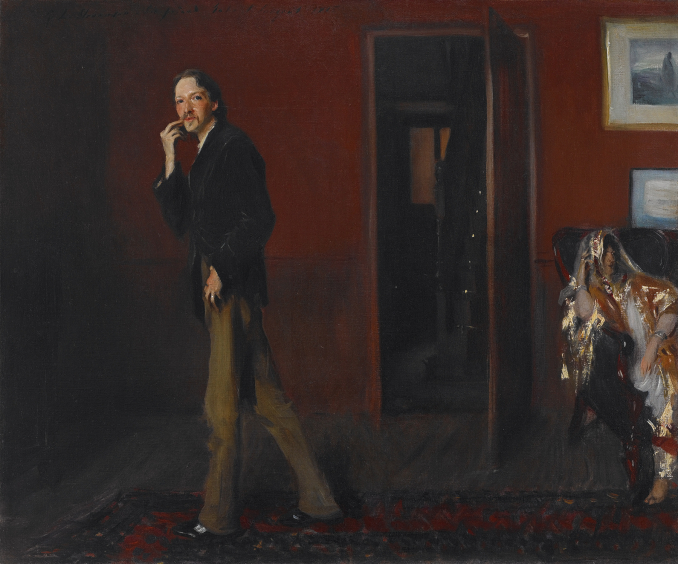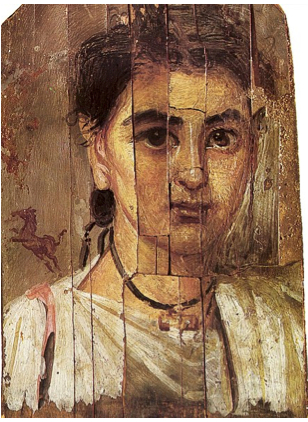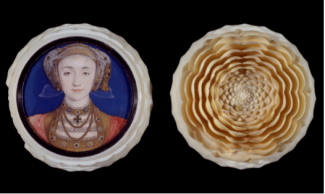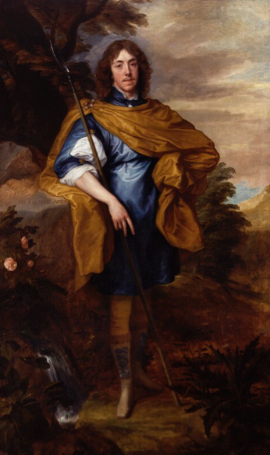Food For The Soul: Portraits and Selfies

“Every portrait that is painted with feeling is a portrait of the artist, not of the sitter. The sitter is merely the accident, the occasion. It is not he who is revealed by the painter; it is rather the painter who, on the coloured canvas, reveals himself.” Oscar Wilde, The Picture of Dorian Gray
By Nina Heyn, Your Culture Scout
Google’s Arts and Culture app has recently become the one of the most downloaded apps because it allows people to match themselves against famous portraits. Results vary from amazing to silly but it is much fun to try.
Human nature being the same in space and time, portraits were all the rage amongst the wealthy for millennia. In antiquity, patrons were immortalized either in sculptures (anything from the bust of Queen Nefertiti to Roman marbles) or in mosaics, or even in after-life renditions like in the famous Fayum mummy portraits. If you could afford it, you had someone paint, sculpt or draw your picture.

Fayum portrait of a Boy, 2nd century AD, collection of National Museum in Warsaw. Image credit: public domain
Hans Holbein the Younger made a living out of painting portraits of important personalities of his time, including marriage prospects for King Henry VIII. It did not work out so great for some of the sitters, considering the king was famous for getting rid of his spouses once he married them, but it did work for Holbein and art lovers as we have now some great portraits to admire.

Miniature portrait of Anne of Cleves by Hans Holbein in an ivory box c. 1539. © Victoria and Albert Museum, London.
The National Gallery in London has in its collection a Holbein portrait of Christina of Denmark – a full size image of a very young woman in black robe. Henry VIII was on a market for a fourth wife and he was interested in this 16-year-old widow (she lost her husband at the age of 13 – we have made some progress since those times, haven’t we?). Young Christina was smart enough to turn him down and the portrait hints at her maturity – she has a very young, girlish face but casts a focused, serious gaze.

Christina of Denmark by Hans Holbein the Younger, c. 1538. © National Gallery, London.
For centuries, English and European nobility had a custom of immortalizing themselves in “selfies” done by best painters. Anthony van Dyck, Rubens, Velazquez, Antonio Moro, Hyacinthe Rigaud, Rembrandt, the two giants of the 18th century English art: John Gainsborough and Joshua Reynolds, and countless other European masters have all made their living, gained titles and social recognition, and expressed themselves in representational art thanks to commissioned portraits of their aristocratic patrons. Luckily, they also painted landscapes and domestic scenes of city and village people or we would have nothing to admire than stiffly posed nobles in their best silks and jewels. Masters being masters, they still made their portraits great by observing their sitters’ inner life, solving complex compositional and coloring issues, and bringing textures and shapes to life. Often there was a whole real-life story that gave an impetus to painting sessions. For example, young Sir George Stuart had Anthony van Dyck paint him as a mythological shepherd to express Stuart’s yearning for a girl his parents did not want him to marry. Sometimes a relationship between a portraitist and the subject could be downright dangerous to the artist, as was the case of Elisabeth Vigée Le Brun who painted many portraits of Queen Marie-Antoinette and was forced to flee abroad during the French Revolution.

Lord George Stuart, 9th Seigneur of Aubigny by Sir Anthony Van Dyck, c. 1638, © National Portrait Gallery, London
By the late 18th and the 19th century, nobility’s custom of having family portraits done to adorn family mansions has spread to homes of regular folks, and just before photography got good enough to replace realistic paintings altogether, almost everybody who had a bit of money or a painter friend could have some portraits done. Thanks to that urge to record likeness whenever possible, we have some such memorable portraits like a portrait of the three Bronte sisters (not a good one, done by their brother, but important for history of literature), the amazing gold leaf-covered portrait of Adele Bloch Bauer by Gustav Klimt and Marie Cassatt’s emotional, intimate impressions of women and children.
With time, even the fashion of having those larger-than-life-size portraits of family members has spread from palaces to homes of the wealthy patrons. The richer you were, the bigger your house and the bigger portraits were commissioned. Society painter John Singer Sargent specialized in such portraits of rich and famous, society ladies and celebrity writers. What makes him an outstanding artist is his ability to tell an inner story of his sitter. You can check out his famous Portrait of Madame X and a very illustrative Robert Louis Stevenson and his Wife, an odd painting in which Stevenson is walking away from his slumped, half-visible wife on the other side of the room.
A great place to check out portraits throughout history is the National Portrait Gallery in London which displays over a 1000 portraits from 600 years of representational art. Holbein’s watercolor and ink portrait of King Henry VIII is there, as well as Sargent’s portrait of writer Henry James and van Dyck’s portrait of the aforementioned, lovelorn Stuart. The Gallery has also some very modern ones – a 2005 portrait of writer J.K. Rowling by Stuart Pearson Wright, Brian Organ’s portrait of Diana, Princess of Wales, and some sketches for a portrait of Sir Winston Churchill by Graham Sutherland which the sitter called “malignant” and said that “he made me look half-witted, which I ain’t.” Churchill destroyed the portrait itself, so only sketches and a photo of the picture have been preserved.
Metropolitan Museum of Art is another extensive source of interesting portraits such as Cezanne’s Portrait of Madame Cezanne in a Red Dress, a charming Renoir’s Madame Georges Charpentier and her children, Van Gogh’s L’Arlesienne, a Roman wall painting Woman Playing the Kithara, Ingres’s La Princesse de Broglie or Picasso’s Gertude Stein.
Even if you do not happen to be in London or New York in the moment, you can google these portraits and see their incredible power of insight into human minds and emotions. Or… you can open the popular Google’s selfie app and become one of the classics yourself! As long as you do not care about privacy when providing your image to the Alphabet company, there is probably a great work of art that will provide this elusive artistic match for you.
The Google Arts and Culture app can also be a resource through its interactive sections that provide thousands of images, videos and stories in categories such as Museum Explorer (it uses Google’s Street View technology), Art in Focus, Cultural Heritage, Spotlight on a specific artist etc. This online platform is affiliated with almost 50 museums worldwide and allows for virtual museum tours, examining artworks in great detail, and compiling users’ own virtual collections from over 30,000 images.
